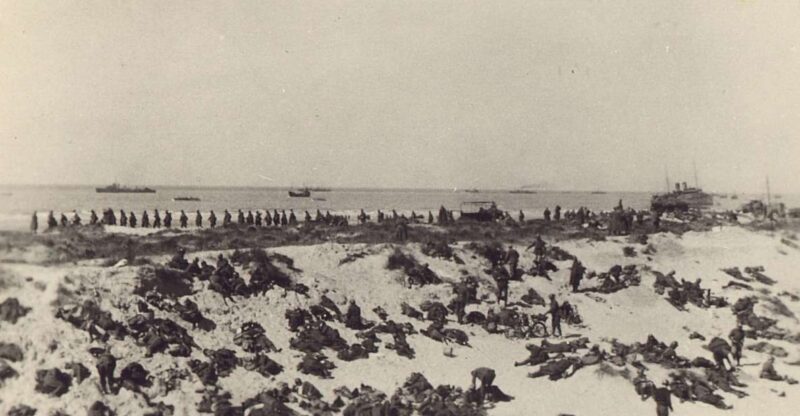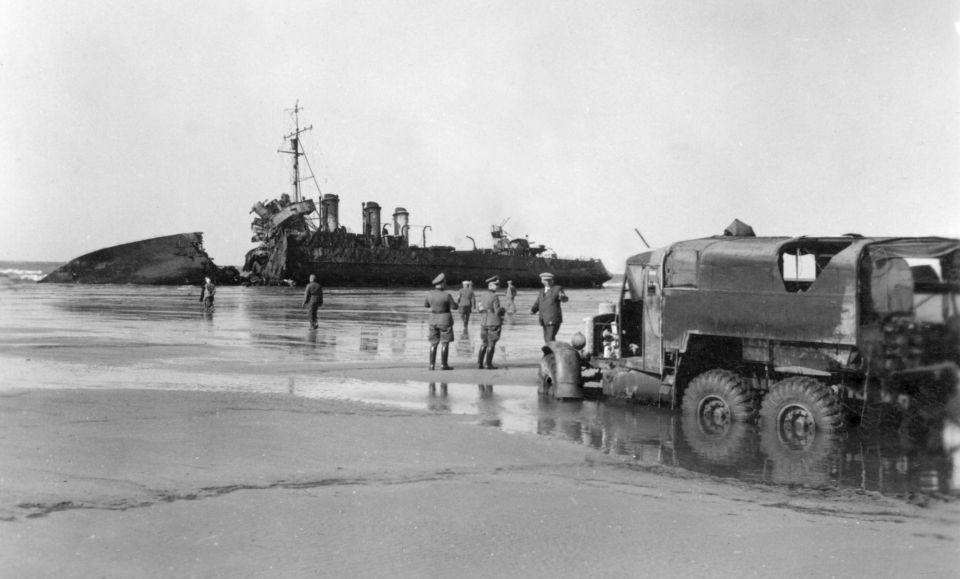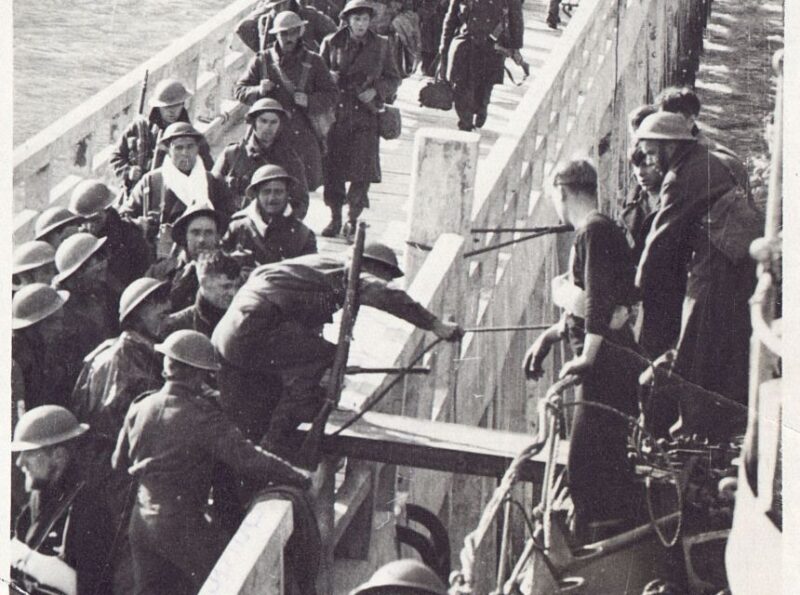The evacuation of Allied troops from the beaches of Dunkirk in 1940, known as Operation Dynamo, stands as a defining moment of World War II. Visitors can now explore this historic event through the Battlefield of Dunkirk Tour, which delves into the strategic significance of the port, the harrowing experiences of soldiers, and the crucial role of the ‘Dunkirk Little Ships.’ Featuring filming locations from the acclaimed movie ‘Dunkirk,’ the tour offers a powerful and immersive connection to the events that shaped the course of the war. Uncovering the remarkable story of Dunkirk provides a deeper understanding of a turning point that would profoundly influence the trajectory of the conflict.
This experience made our list of the 2 Best Tours In Dunkirk.
Key Points

- The evacuation of over 338,000 Allied troops from Dunkirk’s beaches was a defining moment of World War II, showcasing the determination of the Allied forces.
- The East Mole’s strategic location and size played a crucial role in the efficiency and success of the Operation Dynamo evacuation.
- The ‘Dunkirk Little Ships’, civilian boats that evacuated soldiers directly from the shore, made a significant contribution to the overall evacuation efforts.
- The British Memorial at Dunkirk serves as a solemn tribute to the 4,528 soldiers of the British Expeditionary Force who died during the evacuation.
- The Battlefield of Dunkirk Tour offers visitors the opportunity to connect the historical events of 1940 with their cinematic representation in the film ‘Dunkirk’.
Historical Context of Operation Dynamo

Dunkirk was the site of a critical World War II evacuation operation known as Operation Dynamo, which took place in May-June 1940 after German forces had invaded and occupied much of Western Europe.
As the German army advanced, hundreds of thousands of Allied troops became trapped on the beaches of Dunkirk, facing capture or annihilation.
In a remarkable evacuation effort, over 338,000 soldiers were rescued and transported back to Britain, allowing them to regroup and eventually play a key role in the Allied victory.
The evacuation was a defining moment of the war, demonstrating both the perilous situation of the Allied forces and their determination to fight on despite the initial setbacks.
You can also read our reviews of more tours and experiences in Dunkirk.
Overview of the Evacuation Beaches

The wide, sandy beaches were the scene of desperate efforts by soldiers to escape the ‘Hell of Dunkirk’ and board the ‘Dunkirk Little Ships’ for evacuation.
With the German forces closing in, thousands of Allied troops were trapped along the coast, facing enemy fire and the threat of capture. The beaches became a chaotic battleground as soldiers scrambled to reach the water’s edge, often under constant bombardment from the Luftwaffe.
Despite the horrendous conditions, the evacuation was a remarkable success, with over 338,000 men rescued from the beaches and nearby waters. The images of the beleaguered soldiers lining the shoreline have become some of the most iconic of World War II.
Significance of the Port and East Mole

Within the port, the East Mole served as the primary evacuation point for most of the Allied soldiers during Operation Dynamo. Its strategic location and size allowed for the efficient embarkation of troops onto the ‘Dunkirk Little Ships’ and larger naval vessels.
The mole’s significance is highlighted by three key factors:
- Its length of 1.4 miles enabled large numbers of men to board ships simultaneously.
- Its wide, flat surface provided ample space for soldiers to gather and await evacuation.
- Its proximity to the shallow waters of the Dunkirk beaches facilitated the transfer of troops from shore to ship.
The East Mole played a crucial role in the successful evacuation of over 338,000 Allied soldiers from the Dunkirk beaches during the operation.
Experiences of Soldiers During the Evacuation
Soldiers endured harrowing conditions as they desperately sought evacuation from the Dunkirk beaches, often waiting for hours or even days amidst the chaos and German bombardment. Many soldiers were forced to wade through waist-deep water to reach the ships, under constant threat of enemy fire. The sheer scale of the evacuation effort was overwhelming, with hundreds of thousands of men crowded onto the beaches.
| Conditions Experienced by Soldiers | |
|---|---|
| Chaos and Confusion | Exhaustion and Dehydration |
| German Bombardment | Lack of Food and Supplies |
| Long Waits for Evacuation | Constant Threat of Enemy Fire |
Amid the terror, the soldiers’ resilience and determination to escape the German advance was on full display, forging an iconic moment in World War II history.
More Great Thing To Do NearbyRole of the ‘Dunkirk Little Ships’
Amidst the chaos and desperation on the Dunkirk beaches, a flotilla of civilian boats, known as the ‘Dunkirk Little Ships’, played a vital role in the evacuation efforts.
These ordinary boats, ranging from fishing vessels to pleasure cruisers, made repeated trips across the English Channel to rescue thousands of soldiers.
The ‘Dunkirk Little Ships’ were instrumental in several ways:
-
They were able to access the shallow waters and beaches, where larger naval vessels couldn’t approach.
-
They evacuated soldiers directly from the shore, providing a critical link between the beaches and the larger ships waiting offshore.
-
Their agility and speed allowed them to make multiple trips, significantly increasing the overall number of men rescued.
Commemorating the Fallen at the British Memorial

Though the evacuation of Dunkirk was a triumph of survival, the British Memorial stands as a solemn reminder of the tragic loss of life during the operation. Located near the beaches, the memorial commemorates the 4,528 soldiers of the British Expeditionary Force who died in 1940 and have no known grave. The adjacent cemetery contains 810 graves of British soldiers killed during the evacuation.
| Name | Rank | Cause of Death |
|---|---|---|
| James Smith | Private | Shelling |
| Emily Jones | Nurse | Illness |
| Michael Williams | Sergeant | Drowning |
| Sarah Taylor | Corporal | Gunfire |
Visitors to the Dunkirk battlefield can pay their respects at this somber yet powerful tribute to the sacrifices made during Operation Dynamo.
Filming Locations From the Movie ‘Dunkirk’
Along With the historic sites of Operation Dynamo, the Battlefield of Dunkirk Tour also incorporates locations used in the filming of the 2017 movie ‘Dunkirk’ directed by Christopher Nolan.
Visitors can see:
- The Mole, the long concrete breakwater that served as a key evacuation point, where crucial scenes were filmed.
- The beaches of Dunkirk, the setting for the harrowing depiction of the mass evacuation on the big screen.
- The nearby Grand Redoubt, a German defensive position that provided a backdrop for intense battle sequences.
These filming locations offer a unique opportunity for tour participants to directly connect the events of 1940 with their cinematic representation, providing a powerful and immersive experience.
Understanding the Legacy of Dunkirk
The evacuation of over 338,000 Allied troops from Dunkirk stands as a defining moment in World War II, cementing the site’s enduring legacy in the annals of military history. The Dunkirk evacuation, known as Operation Dynamo, demonstrated the resilience and resourcefulness of both soldiers and civilian volunteers who risked their lives to rescue the stranded forces. Today, the Dunkirk battlefield serves as a solemn reminder of the sacrifices made, with the British Memorial and Cemetery honoring the fallen. The legacy of Dunkirk continues to inspire, as seen in the acclaimed 2017 film of the same name, which captured the harrowing events with vivid realism.
| Significance | Resilience | Sacrifice | Inspiration |
|---|---|---|---|
| Defining WWII moment | Soldiers and civilians | British Memorial | Film adaptation |
| Allied troop evacuation | Rescue efforts | Cemetery | Vivid realism |
| Operation Dynamo | Resourcefulness | Fallen soldiers | Enduring legacy |
| Historical importance | Fortitude | Honoring the dead | Cultural impact |
Frequently Asked Questions
What Is the Duration of the Tour?
The tour duration is not specified. Tour lengths can vary depending on factors like group size, time spent at each site, and overall schedule. Without more details, the exact duration of this particular tour is unknown.
Is the Tour Available in Different Languages?
The tour is available in multiple languages, typically including English, French, and Dutch. Visitors can choose their preferred language when booking the tour to ensure they fully understand the historical significance of the Dunkirk evacuation.
Are There Any Physical Requirements for the Tour?
The tour does not have any specific physical requirements. Participants should be able to walk moderate distances and stand for periods of time. Comfortable walking shoes are recommended.
Can Visitors Take Photographs During the Tour?
Visitors are generally allowed to take photographs during the tour, though they should be respectful and avoid disrupting the guide or other participants. Photography may be restricted in certain sensitive areas for preservation or security reasons.
Are There Any Discounts or Package Deals Available?
There may be discounts or package deals available for the tour, such as reduced rates for seniors, students, or groups. Visitors should check with the tour operator for any applicable offers or bundled pricing options.
Recap
The Battlefield of Dunkirk Tour offers a poignant and immersive experience for visitors to connect with the remarkable events of Operation Dynamo.
Through exploring the strategic significance of the port, the soldiers’ harrowing experiences, and the crucial role of the ‘Dunkirk Little Ships,’ the tour provides a deeper understanding of this defining moment in World War II and its lasting legacy.
You can check if your dates are available here: